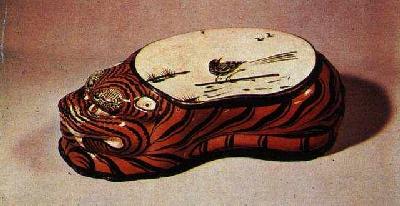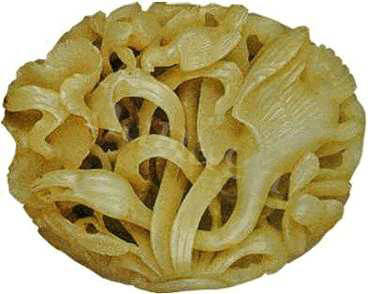| About China > History > Dynasties > dycontent |
|
|
Jin Dynasty
The Jin (or Kin) Dynasty (265-420) was established by Wanyan Aguda of the Jurchen (Nuzhen) tribe and was headed by nine successive emperors.
In 1114, Wanyan performed a ritual with his armies on the banks of the Lailiu River (Jianlalin River between Heilongjiang and Jilin provinces), declaring war on the Liao. Emerging victorious in Ningjiang and Chuhedian, Wanyan established a new dynasty -- the Great Jin Dynasty -- in 1115, proclaiming himself emperor. Historical records refer to Aguda as Emperor Taizu.
Initially, the Jin Dynasty established its capital city in Huining Prefecture (Baicheng, south of Acheng, Heilongjiang Province), later moving to Yanjing (Beijing City). Lastly, the capital was moved to Bianjing on the site of modern Kaifeng City in Henan Province.
For a long period of time the Jin people were oppressed by the Khitan people. After winning a decisive victory in the battle of Hubudagang, the Jin carried out its plan to conquer the Liao. In 1120, the Jin Dynasty made an alliance with theNorthern Song (960-1127) to defeat the Liao, and in 1125 the Liao Emperor Tianzuo was captured and his dynasty collapsed. The Jin then assumed total control of Northern China.
Soon afterwards, the Jin turned against the Northern Song. Emperor Taizong (Wanyan Sheng), who was greatly encouraged by the victory over the Liao, launched a general war against the Song. Although the Song army put up a strong resistance, due to its weak court and ineffective leadership, the Jin army prevailed. In 1127, the Jin army took the capital, Kaifeng, and captured the Song emperor. Following the fall of the Northern Song, the remainder of the court fled south and established a new dynasty -- theSouthern Song (1127-1279).
Soon, the newly founded Southern Song also became a target for the Jin. However, this attempt proved less successful for the Jin due to the resistance led by Yuefei, Han Shizhong and other heroes. The Jin army suffered heavy setbacks and could no longer compete with the Song. Thus, a period of coexistence between the two rival powers came into being.
1. Administration System
During the "tribal union" period, the premier and union chieftains (bojilie) shared the administration of various Jurchen tribes. This system was abolished following the founding of the Jin Dynasty and a committee was formed that consisted of four, followed by five chief executives who acted as the highest authorities under the emperor. The system was subject to further innovations after a number of Liao and Song territories were conquered during Emperor Taizong's reign. While the Liao and Song administrative procedures were adopted, further reforms were introduced by Emperor Xizong and the Prince of Hailing. When Emperor Shizong came to power, a complete political system was set up. The Shangshu Department, as a primary body, helped the central government conduct state affairs.
2. Military Service System
The Jin military service system involved a combination of various components. Based on the Jurchen system, it showed its own unique character by absorbing elements from the Khitan, Bohai, Yi and Han. As well as laying emphasis on the cavalry, the Jin made efforts to establish and develop other armed forces. The troops consisted of soldiers of many nationalities -- both mercenaries and conscripts and officers enjoyed high status in the country's social strata. This system was to have great influence on the military strategies of later dynasties.
During the early years of the Jin, the frequent hostilities caused the economy to stagnate. In attempt to promote commercial development, Emperor Taizu adopted a policy of reducing trade barriers that included establishing a trading relationship with the Song. Soon, this had an effect on and expedited the recovery and development of commerce. Furthermore, the emperor revitalized agriculture through tax reductions and exemptions to encourage the farming community to trade with the neighboring tribes. From the reign of the Prince of Hailing to the reign of Emperor Zhangzong, the regime enjoyed economic prosperity. The flourishing economy also benefited from a monetary reform that was introduced in 1198 during the reign of Emperor Zhangzong. For the first time ever silver was used as legal tender. This marked was an important milestone in the history of currency and had a far-reaching influence on the currency system of susbsequent dynasties and even modern times.
Jin rulers adopted a positive attitude towards the Han culture. Chinese, Khitan and Jurchen script were used simultaneously although Khitan script was later abolished to popularize Chinese calligraphy. Emperor Zhangzong became a keen collector of books written in Chinese that did much to promote cultural development. Many writers emerged during this period, including Yuan Haowen, who was especially eminent in poetry, prose and treatise. Yuan's works represent the highest literary achievements of the Jin. The Jin Dynasty also made important contributions to the arts by inheriting characteristics from Liao architecture and absorbing elements from the Song. One of the finest examples of Jin architecture is the Lugou Bridge. Completed between 1188 and 1192 it is the oldest existing, multi-arched stone bridge in the Beijing area. The exquisite bridge sculptures and its ornamental columns demonstrate a practical application of the aesthetic principles of unity and variation that are a great attraction to this day.
A peaceful yet uneasy period between the rival Jin and Southern Song dynasties was made possible when the Jin became an ally of the Western Xia. This gave the Jin a dominant position in which it was able to demand tributes from the Song. However, the Jin underestimated the growing threat from its ancient enemies, the Mongolians.
With Mongolia to the north, the Western Xia to the west and Southern Song to the south, the Jin was in an unfavorable situation. Rather than uniting with the Western Xia and Song to oppose the Mongols, the Jin foolishly attacked the Song while attempting to resist the Mongols. This move resulted in the Jin's isolation with no possibility for assistance. To counter threats from the west and north, the Jin moved its capital from Zhongdu (Beijing city) to Bianjing (Kaifeng City, Henan Province). It sought to make gains in the south by compensating for the loss of its northern territory. Leaving the northern territory to the mercy of the Mongols the Jin began a campaign against the Southern Song with little, if any, success. In 1233, the Mongolian army led by Ogodei conquered Bianjing and the Jin emperor fled to Caizhou (Runan County, Henan Province). The following year the Mongolian army, assisted by the Song army, captured Caizhou and put an end to the Jin Dynasty.
During the Jin's 155-year span, nine emperors had occupied the throne. At its peak, the population numbered some 44.7 million as the territory expanded from the Outer Hinggan Mountain in the north to the Huai River in the south, and from the coast in the east to Shaanxi in the west. |
||||||
 |
 Establishment of the Jin
Dynasty
Establishment of the Jin
Dynasty

 Conquest of the Liao and Song
Dynasties
Conquest of the Liao and Song
Dynasties Rule of the Jin
Dynasty
Rule of the Jin
Dynasty Social Economy
Social Economy  Culture
Culture  Decline and Collapse of the
Jin Dynasty
Decline and Collapse of the
Jin Dynasty